
Commodore International Corporation was a Bahamian home computer and electronics manufacturer with executive offices in the United States founded by Jack Tramiel and Irving Gould. Commodore International (CI), along with its subsidiary Commodore Business Machines (CBM), was a significant participant in the development of the home computer industry in the 1970s to early 1990s. In 1982, the company developed and marketed the world's second-best selling computer, the Commodore 64, and released its Amiga computer line in July 1985. Commodore was one of the world's largest personal computer manufacturers, with sales peaking in the last quarter of 1983 at $49 million.

The Great Giana Sisters is a platform game developed by the West German company Time Warp and published by Rainbow Arts in 1987 for various home computers such as the Commodore 64, Amiga and Atari ST. Players control Giana, or her sister Maria in the multiplayer mode, to explore a magical world inside their dreams. The two seek out a giant diamond to awaken from their dream. They traverse side-scrolling stages while avoiding hazards such as monsters and other enemies with the aid of power-ups grant them various abilities such as firing projectiles and making enemies fall asleep.

Rush'n Attack, also known as Green Beret in Japan and Europe, is a run-and-gun and hack-and-slash video game developed and released by Konami for arcades in 1985, and later converted to the Nintendo Entertainment System and home computers. Its North American title is a play on the phrase "Russian attack" due to its Cold War setting. It was ported to home systems and became a critical and commercial success for arcades and home computers.
Rocky's Boots is an educational logic puzzle game by Warren Robinett and Leslie Grimm, published by The Learning Company in 1982. It was released for the Apple II, CoCo, Commodore 64, IBM PC and the IBM PCjr. It was followed by a more difficult sequel, Robot Odyssey. It won Software of the Year awards from Learning Magazine (1983), Parent's Choice magazine (1983), and Infoworld, and received the Gold Award from the Software Publishers Association. It was one of the first educational software products for personal computers to successfully use an interactive graphical simulation as a learning environment.

The Legend of Kage is a side-scrolling hack-and-slash game developed and published by Taito in 1985. In this game, the player controls the ninja Kage, with the objective being to get through five stages in order to save the princess Kirihime. These stages are littered with enemies, but Kage has various skills and weapons on his hands in order to get through them.
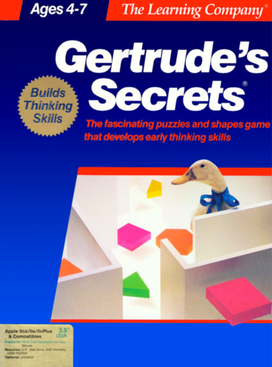
Gertrude's Secrets is a 1984 children's edutainment video game by The Learning Company.
Turn-based tactics (TBT) is a video game genre of strategy video games. They are turn-based simulations of operational warfare and military tactics in generally small-scale confrontations as opposed to more strategic considerations of turn-based strategy (TBS) games. Turn-based tactical gameplay is characterized by the expectation of players to complete their tasks using only the combat forces provided to them in a generally realistic manner.

Secret passages, also commonly referred to as hidden passages or secret tunnels, are hidden routes used for stealthy travel, escape, or movement of people and goods. They are sometimes inside buildings leading to secret rooms.

Injured Engine is a game released for the Apple II and Commodore 64 by Imagic. The player must diagnose problems in a simulated automobile engine. The game aims to teach how engines work and how engine parts relate to each other. It was created by an auto mechanic and a graphic artist. Imagic demonstrated it at the 1984 Consumer Electronics Show.

Microchess, sometimes written as MicroChess, is a chess program developed for the MOS Technology KIM-1 microcomputer by Peter R. Jennings in 1976, and published by his company Micro-Ware. The game plays chess against the human player at a beginner level, with the player entering moves via a keyboard and the computer responding, both in a custom chess notation. The game was ported to many other microcomputers such as the TRS-80, Apple II, Commodore PET, and Atari 8-bit computers by Micro-Ware and its successor company Personal Software between 1976 and 1980, with later versions featuring graphics and more levels of play. A dedicated hardware version of the game called ChessMate was produced by Commodore International in 1978, and the game's engine was licensed to Novag for its dedicated Chess Champion Mk II chess computer in 1979.
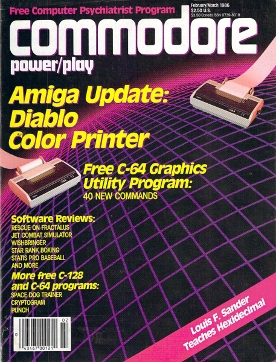
Commodore Power/Play was one of a pair of computer magazines published by Commodore Business Machines in the United States in support of their 8-bit home computer lines of the 1980s. The other was called Commodore Interface, changed to just Commodore in 1981, Commodore Microcomputer in 1983, and finally to Commodore Microcomputers in 1984 and for the rest of its run. The two magazines were published on an alternating, bimonthly schedule.
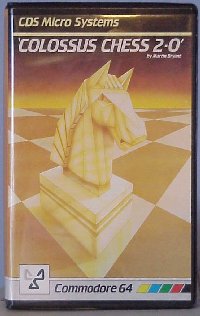
Colossus Chess is a series of chess-playing computer programs developed by Martin Bryant, commercially released for various home computers in the 1980s.

The Kawasaki Synthesizer is a musical software tool for the Commodore 64 created in 1983 by Japanese jazz musician, Ryo Kawasaki. The first of four music programs created by Kawasaki, Kawasaki Synthesizer (1983) was followed by Kawasaki Rhythm Rocker (1984), Kawasaki Magical Musiquill (1985), and Kawasaki MIDI Workstation in 1986.

Home computers were a class of microcomputers that entered the market in 1977 and became common during the 1980s. They were marketed to consumers as affordable and accessible computers that, for the first time, were intended for the use of a single, non-technical user. These computers were a distinct market segment that typically cost much less than business, scientific, or engineering-oriented computers of the time, such as those running CP/M or the IBM PC, and were generally less powerful in terms of memory and expandability. However, a home computer often had better graphics and sound than contemporary business computers. Their most common uses were word processing, playing video games, and programming.

Dream Chronicles, first released in 2007, is a series of adventure, hidden object and puzzle casual games. It was created by Miguel Angel Tartaj for KatGames and published by PlayFirst. It's also the name of the first game in the series.
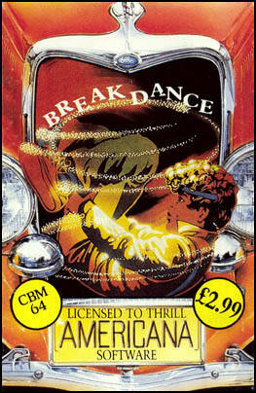
Break Dance is a 1984 rhythm game developed by Beck-Tech and published by Epyx in North America and Europe for the Commodore 64. The game relies on players making dancing moves that resemble the classic game Simon says. The game capitalized on early 1980s-era b-boying, which was a popular trend in American culture. The game was inspired by the films Flashdance and Beat Street.

Sierra Championship Boxing is a boxing video game developed by Evryware and published by Sierra On-Line in 1983. Versions were released for Apple II, Commodore 64, IBM PC compatibles, and Macintosh.
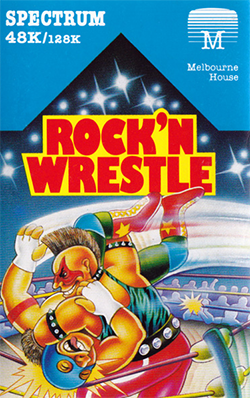
Rock'n Wrestle is a professional wrestling video game released in 1985 for the ZX Spectrum, Amstrad and Commodore 64 8-bit home computers, and as Bop'N Wrestle in 1986 for DOS by Mindscape.

The Thompson Twins Adventure is a 1984 graphic adventure game that was distributed by Computer and Video Games magazine as a promotional 7" flexi disc "freebie" along with its October 1984 issue. The game is based on the Thompson Twins' single "Doctor! Doctor!", and features the Thompson Twins band members as the protagonists. The unusual storage format of the game showcases an experimental technique pioneered by the London-based Flexi Records label, and places the game alongside a small handful of other games distributed on grooved disks. This format never became established and The Thompson Twins Adventure is today valued more for its nostalgic and artifactual value than for its ludological aspects which have been uniformly panned by critics.
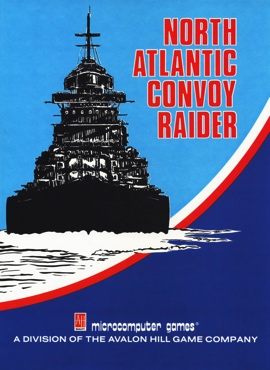
North Atlantic Convoy Raider is a wargame published by Microcomputer Games for TRS-80, Commodore PET, and Apple II in 1980. A version for Atari 8-bit computers was released in 1981.

















